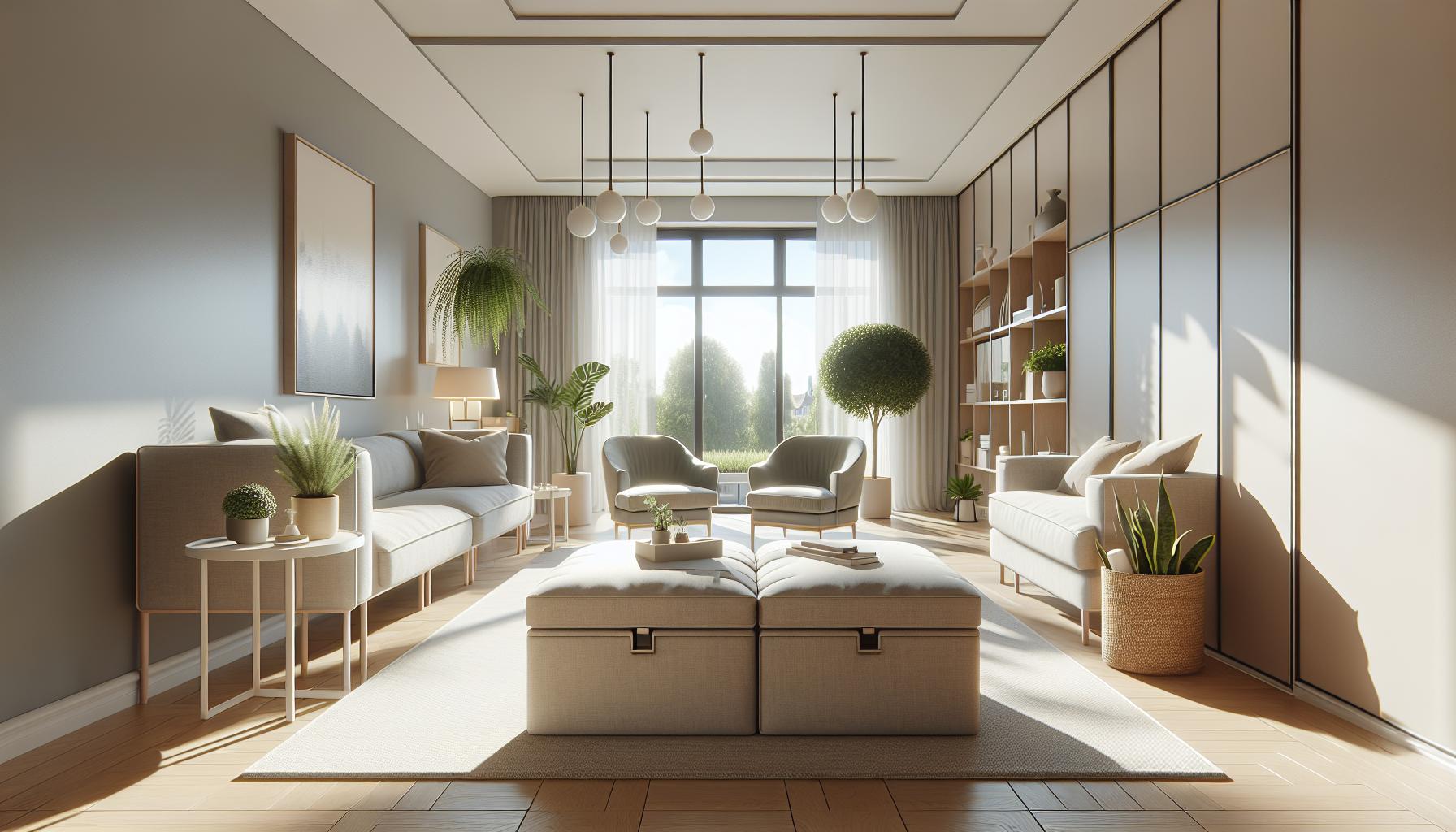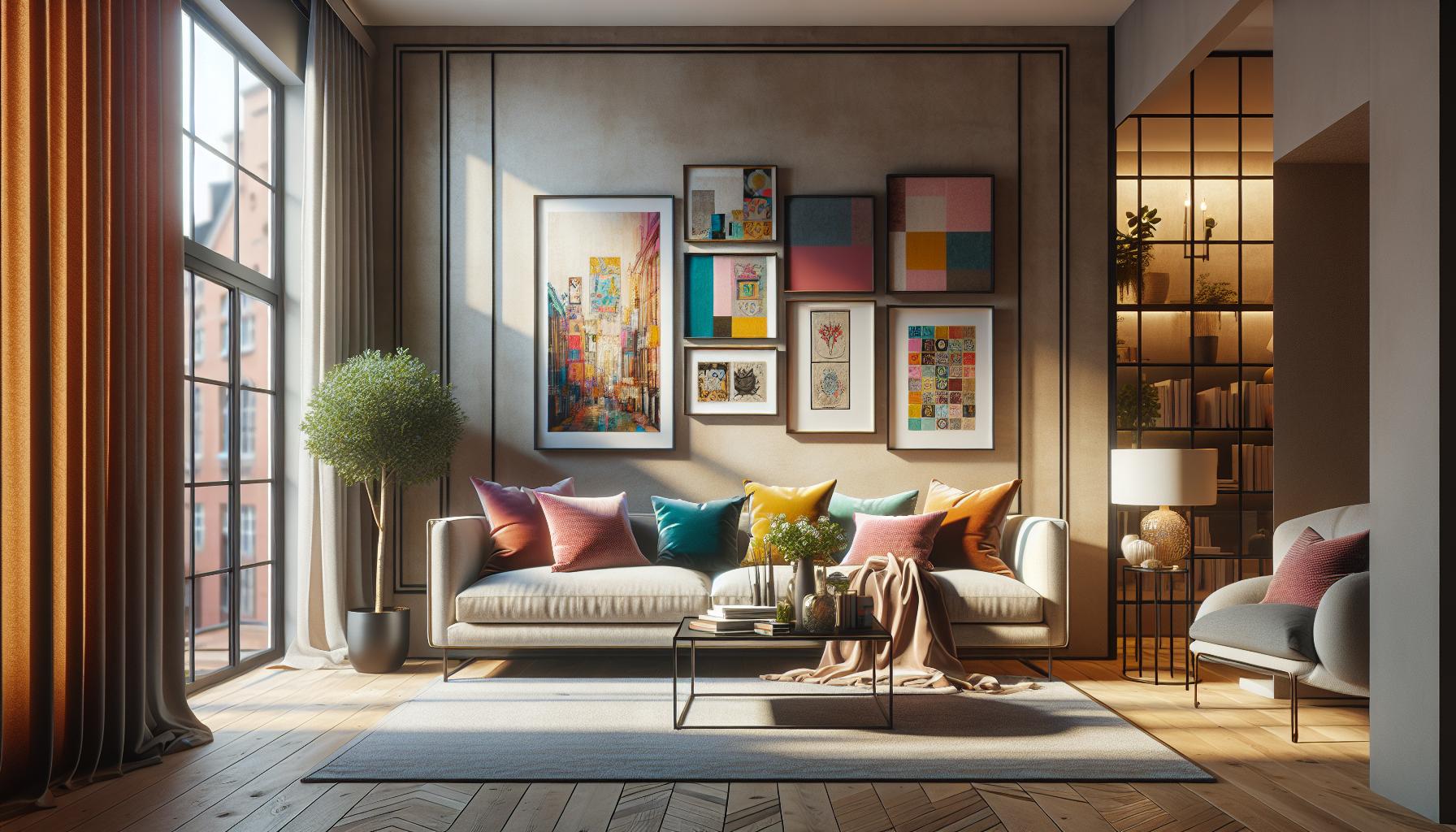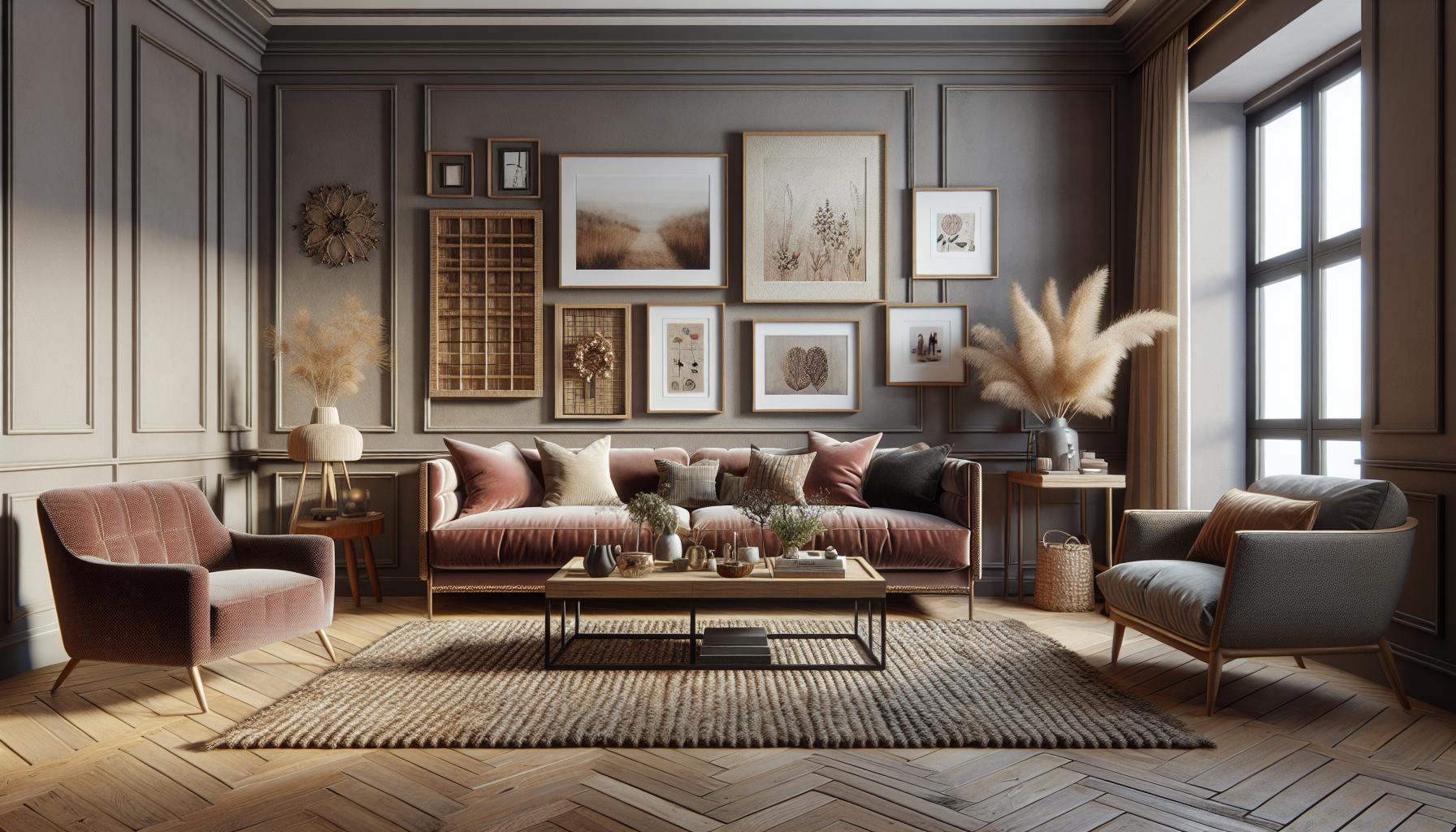Home design and decor play a crucial role in creating spaces that reflect personal style and enhance comfort. With the right choices, any room can transform into a sanctuary that tells a story. From selecting the perfect color palette to incorporating unique furnishings, the possibilities are endless.
As trends evolve, homeowners are increasingly drawn to innovative ideas that blend functionality with aesthetics. Whether it’s embracing minimalism or adding bold accents, understanding the principles of design can make all the difference. This journey into home design and decor not only inspires creativity but also empowers individuals to curate environments that resonate with their lifestyle.
Key Takeaways
- Personalized Spaces: Home design is about creating environments that reflect individual styles and enhance comfort, making use of color palettes, furniture, and decor to tell a unique story.
- Design Principles: Understanding layout, color schemes, proportions, and balance is essential for creating harmonious living spaces that feel inviting and functional.
- Current Trends: Emphasizing simplicity and sustainability, current trends are leaning towards minimalist aesthetics and eco-friendly choices that promote functionality and reduce environmental impact.
- Essential Decor Elements: Key components like color schemes and furniture selection play critical roles in establishing overall ambiance and should be carefully considered for both style and practicality.
- Texture and Personalization: Layering different textures creates visual interest, and incorporating personal touches, such as art and souvenirs, fosters a unique connection to the space.
- Multifunctionality: Choosing multifunctional furniture maximizes space, particularly in smaller homes, making design both innovative and efficient.
Home Design And Decor
Home design and decor encompass a wide range of elements that contribute to a cohesive and appealing living space. Key components include layout, color schemes, furniture selection, and decor accessories. Each aspect plays a significant role in establishing an atmosphere that reflects personal style and meets functional needs.
Understanding design principles enhances the ability to create harmonious environments. Proportions and balance dictate how spaces feel and function. By choosing complementary colors and coordinating textures, homeowners enhance visual interest and create inviting areas. Incorporating statements through artwork, lighting, and plants adds depth and character to spaces.
Current trends influence home design, shifting preferences towards sustainability and eco-conscious choices. Materials sourced ethically and furnishings designed for durability contribute to environmentally friendly living. Innovative ideas extend to multifunctional furniture that maximizes space, especially in smaller homes.
Exploring styles like modern, traditional, and eclectic enables individuals to express their unique tastes. Each style incorporates distinct elements, such as clean lines in modern design or ornate details in traditional decor. Mixing and matching styles fosters creativity and personal expression.
Ultimately, home design and decor serve to enhance daily living experiences, creating spaces that are not only functional but also reflect the identities and values of their inhabitants. Understanding these concepts allows for the creation of personalized sanctuaries that balance aesthetics, comfort, and practicality.
Key Trends in Home Design

Current home design trends emphasize simplicity and sustainability, influencing how spaces are curated.
Minimalist Aesthetic
Minimalist aesthetic focuses on clean lines, open spaces, and a limited color palette. This approach emphasizes functionality while eliminating clutter. Key elements include:
- Neutral Colors: White, beige, and gray create a serene backdrop.
- Functional Furniture: Select furnishings that serve multiple purposes, like ottomans with storage.
- Natural Light: Maximizing daylight enhances the feeling of spaciousness.
- Quality Over Quantity: Invest in fewer, high-quality pieces instead of numerous low-quality items.
This aesthetic promotes a peaceful environment, making it easier to unwind.
Sustainable Design
Sustainable design prioritizes eco-friendly materials and practices in home decorating. It encourages long-term thinking about resource use and waste. Components include:
- Recycled Materials: Incorporating items like reclaimed wood and recycled glass reduces environmental impact.
- Energy Efficiency: Opting for LED lighting and ENERGY STAR appliances minimizes energy consumption.
- Biophilic Design: Integrating nature, such as indoor plants or natural light, enhances both aesthetics and well-being.
- Ethically Sourced Products: Choosing furnishings crafted from sustainably harvested wood supports ethical practices.
Focusing on sustainable design creates not just visually appealing spaces but also fosters a commitment to environmental stewardship.
Essential Elements of Home Decor

Home decor encompasses various components that harmonize to create aesthetic and functional living spaces. Key elements include color schemes and furniture selection, both of which significantly influence the overall ambiance of a home.
Color Schemes
Color schemes set the emotional tone of a space. Neutral colors like beige, gray, and white foster a calm atmosphere, while vibrant hues like yellow and blue inject energy and personality. Choosing a cohesive palette that includes complementary colors creates visual harmony. For instance, pairing pastel shades with natural wood tones can produce an inviting effect. Homeowners often utilize color theory principles, such as analogous or contrasting colors, to enhance depth and interest in a room.
Furniture Selection
Furniture selection plays a crucial role in both functionality and style. Assessing the scale of the room ensures the right size and arrangement of furniture pieces. Multi-functional furniture, such as ottomans with storage or foldable tables, optimizes space, especially in smaller areas. Selecting durable materials and textures, such as leather or breathable fabrics, contributes to both comfort and longevity. Balanced proportions and styles—modern, traditional, or eclectic—can reflect individual tastes while ensuring the practicality of daily living.
Tips for Creating a Cohesive Space

Creating a cohesive space requires thoughtful consideration of various design elements. By focusing on texture and personal touches, homeowners can enhance their interiors and reflect their unique styles.
Layering Textures
Layering textures adds depth and visual interest to any room. Combining materials such as wood, metal, and fabric creates a balanced atmosphere. Incorporating items like velvet cushions, woven rugs, and wooden furniture enhances the tactile experience. Mixing smooth and rough textures, like a sleek leather sofa paired with a nubby throw blanket, creates harmony. Use textiles such as curtains and pillows with different patterns to draw the eye and maintain cohesion through a unified color palette.
Incorporating Personal Touches
Incorporating personal touches personalizes a space and makes it feel like home. Displaying meaningful art pieces, family photos, or travel souvenirs injects character into rooms. Selecting decor items that resonate with individual experiences fosters a connection to the environment. Choosing handmade or artisan goods adds uniqueness and supports local artisans. Arranging personal collections or heirlooms thoughtfully will tell a story and enhance the overall design narrative. Adding personal touches facilitates a welcoming atmosphere that reflects individuality.
Home Design And Decor
Home design and decor offer endless opportunities for personal expression and creativity. By embracing innovative ideas and sustainable practices, homeowners can create spaces that are both functional and visually appealing. Understanding design principles allows for the crafting of harmonious environments that reflect individual tastes and lifestyles.
As trends evolve, the focus on minimalism and eco-conscious choices continues to shape the way spaces are designed. Thoughtful selections of color, furniture, and decor can transform any area into a sanctuary that resonates with one’s identity. Ultimately, the journey of home design is about creating a space that feels uniquely theirs, fostering comfort and connection.